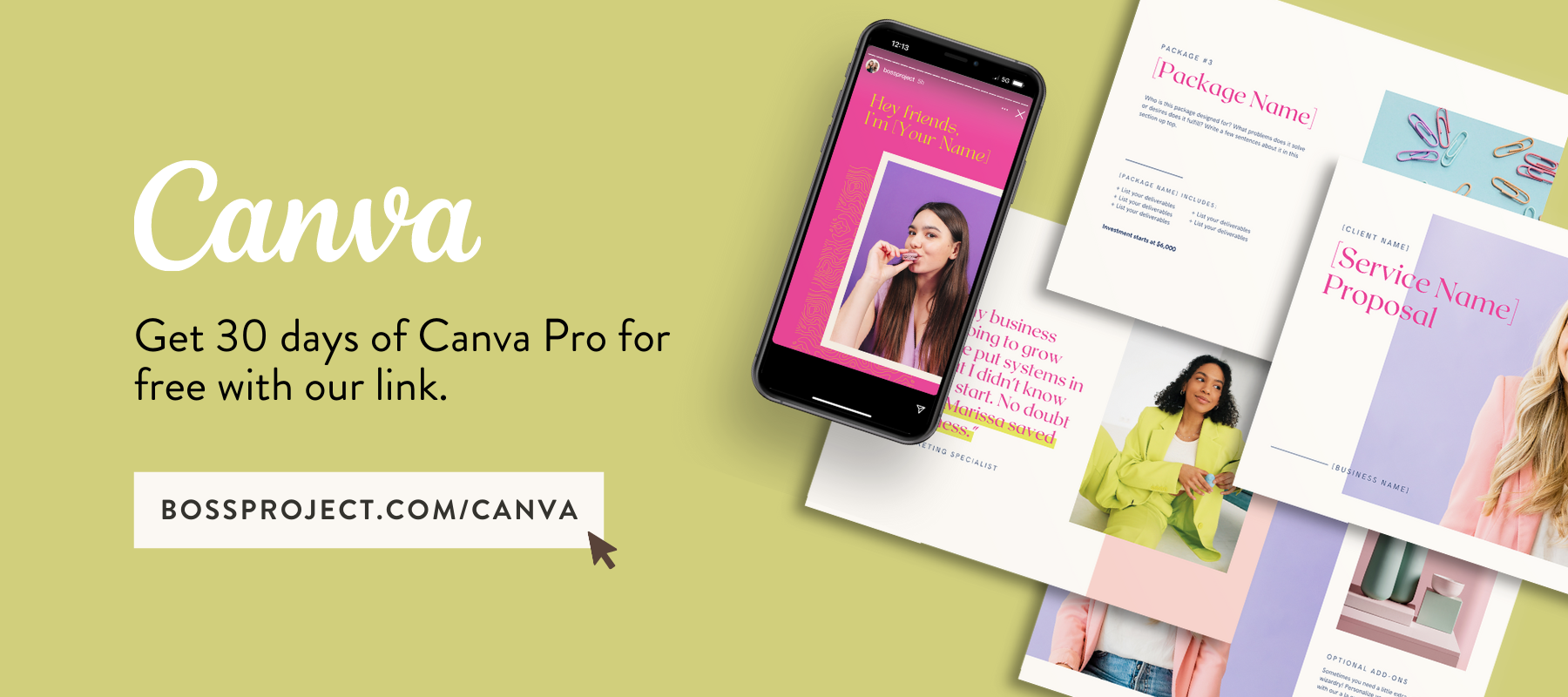Getting Paid To Be Creative is a Myth
Episode 012: Show Notes
Getting paid to be creative is a myth. Lately, we’ve heard this phrase being tossed around a lot. Heck, we’ve even used this exact phrase to describe our journey ourselves. But the phrase isn’t really accurate.
We aren’t getting paid to be creative. We’re getting paid because we are intellectual businesswomen. We take our business seriously and structure it to pay us. We are constantly strategizing new ways to bring in income and grow our business. We test new ways to market, make new sales processes, and offer new things in new ways. And we do it over and over again. So if you want to hear us bust the myth, then this episode is definitely for you!
The Dangers of the Creative Myth
The giant myth that we are talking about today is when people lovingly say that they get paid to be creative. The dangers in believing this myth or saying it to others is that it oversimplifies the hard work and skill that goes into being a creative business owner. The businesswoman inside of you has got to thrive and you have to focus on business growth strategies in order to create a sustainable income. In the end, you are not getting paid to be creative. You are getting paid to be an intellectual businesswoman.
Being Boss Comes First
A common misconception that creatives themselves believe is that you are just a creative, running a small business. That you are merely pursuing a hobby, or following your passions and sometimes you focus on business. But the truth is, you are boss first. You might still design. You might still do the creative aspect, but being boss is number one. You are no longer “what you do” but instead, you are the CEO or the boss-lady of your business. The successful creative business owners who are killing it in the entrepreneurial world are not simply finding success because of their “creativity”. In fact, they have put on the many other hats that make a business run and helps it to grow. That creation hat sometimes doesn’t get put on as much as we want it to, and that’s okay, but that’s what creating a business is all about.
Using The Fudge Factor for the Sake of First Impressions
So often we get distracted by what other people are doing. We think that if other business owners are building a team, we should too. When in fact, that is just not where you are at in your business. The key is simply owning the stage of growth that you are in and having the patience to go through each phase as it comes. Use that fudge factor in the sense of just owning what your situation is like. Whatever your circumstance is, talk about it in a way that makes you feel comfortable, but know that you do not have to hide it. That will open so many doors for you, whether you’re finding your business bestie, or whether you are finding your next client or customer.
Stop Doing Things Just to Appeal to Others
To appeal to others we often broaden who we are speaking to, which makes it really hard to understand and even more difficult to relate to. Instead, stop speaking to every person and start speaking to those who will actually get you.
Like Marie Forleo always says, “If you’re tawkin’ to everybody, you’re tawkin’ to nobody.”
Just because everyone out there is using a marble flat lay, if it does not sit well with you or fit in with your brand, you do NOT have to do it! Go ahead, step outside of the box, and really find what works the best for your business.
The Myth of “Build It and They Will Come"
This is a myth that really gets our blood boiling. And the worst part is that we see it all the time! A lot of it is we get stuck on this idea of if we do something meaningful upfront that everything else will just fall into place and the stars will align. But the reality is, not only do you have to do the work before, you have to keep doing the work long after it is built. There’s the launch, the promotion, and the networking. Time and time again we see people convincing themselves that certain strategies do not work for their business, because they didn’t actually have a strategy to begin with.
The Disappointing Reality of the Overnight Success
This almost always goes back to that piece about looking over people’s shoulders. Many of us see other people who are further along in business, doing collaboration after collaboration, and they’re launching this and doing that. A blog does not simply go from zero to 50,000 views in a day. It takes writing consistently, five days a week for a year and a half if you have to, to even consider getting that to happen. Some people definitely see growth more rapidly in different places, but regardless, you need to set your expectations based on yourself. You have to hold yourself as your own standard of success and then judge how you can do better.
Model Others. Do Not Become Them.
Often times people try to hide behind others who are successful, even if only a little more than your own business. We tend to look at what other people are doing and we want to follow in their footsteps and that’s totally fine. However, the best advice we can give you is to go out and make your own path. Come up with your own strategies, develop your own products and services and find your own zone of genius. Because the more original you are, the more you are going to stand out above the crowd. However, if you are looking to someone else to follow in their shoes, make sure the results that they were getting were pretty recent and in the industry that you are actually in.
Highlights
Understand the dangers of believing the myth that you are getting paid to be a creative. [0:01:43.3]
Learn why being boss comes first when you are growing your business, and your craft is no longer the main focus. [0:04:45.1]
Find out how using the fudge factor for the sake of first impressions can leave you less unique. [0:09:43.3]
Learn how to stop doing things just to appeal to others, and find out what works for your business instead. [0:13:16.6]
See how the myth of “Build it and they will come” can prevent your business from reaching its potential. [0:17:18.3]
Learn the disappointing reality of the overnight success, and how you actually have to put in the hard work to succeed. [0:21:43.1]
Find out why it is important to model others, you not to become them entirely. [0:25:38.5]
#TalkStrategyToMe [0:33:55.4]
Step back and take a look at how you can focus on the business side of your business, with the Party in my Biz Pants, Because Now I Know What the Heck is Going On Plan.
Be more original. Make a list of everything you’re doing that’s trying to copy or mimic someone in one column and then make a list of things that you can do that are totally new and totally exciting in the second column.
Perfect your elevator pitch.
ON TODAY’S SHOW
Abagail & Emylee
The Strategy Hour Podcast
We help overwhelmed and creative entrepreneurs break down their Oprah-sized dreams to create a functioning command center to tame the chaos of their business. Basically, we think you’re totally bomb diggity, we’re about to uplevel the shiz out of your business.
KEY TOPICS
The myth of getting paid for being a creative, Understanding why being boss comes first, Using the fudge factor to make a first impression, Find out what works for your business, not appealing to others, The myth of “build it and they will come,” The disappointing truth of an overnight success, Learning to model (but not to become) someone else





